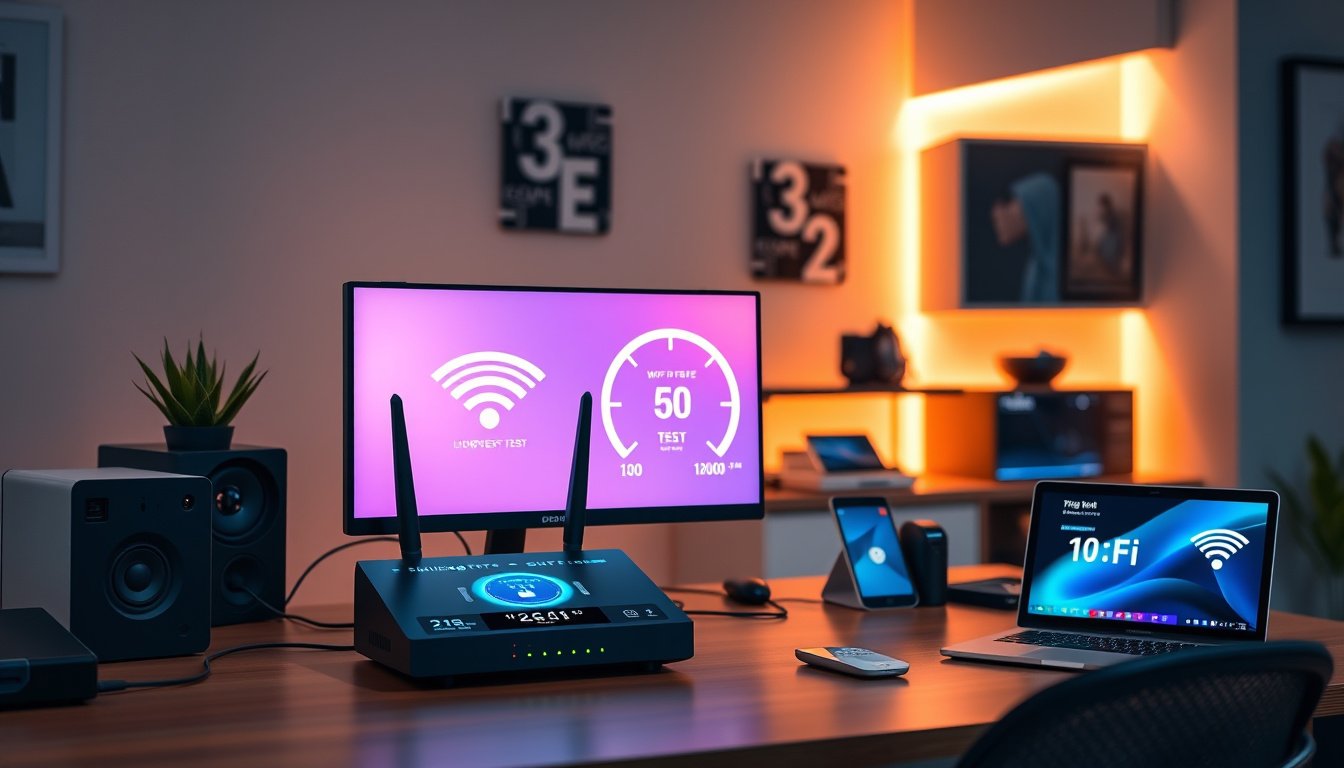
In today’s connected world, a fast and reliable Wi-Fi connection at home is essential for everything from remote work and online classes to streaming, gaming, and smart home devices. Even with a fiber-optic line or a high-speed internet plan, poor Wi-Fi performance inside your home can be frustrating. Fortunately, there are several proven strategies to optimize your Wi-Fi, enhance coverage, and achieve lightning-fast speeds throughout your living space. 
1. Position Your Router for Optimal Coverage
One of the simplest yet most effective steps to improve your Wi-Fi is relocating your router.
- Centralize Your Router: Place your router in a central location in your home to provide the broadest coverage. Avoid putting the router in a closet, cabinet, or near corners that can block signals.
- Elevate the Router: Position it high on a shelf or mount it on a wall. Elevation helps the signal travel farther, especially in multi-story homes.
- Avoid Obstacles and Interference: Keep the router away from thick walls, metal objects, and electronic devices such as microwaves, cordless phones, and baby monitors that operate on similar frequencies and cause interference.
- Adjust Antennas: If your router has external antennas, changing their angle or direction can improve signal strength in different areas.
2. Use Wired Connections Where Possible
While Wi-Fi is convenient, wired Ethernet connections provide faster and more reliable speeds, unaffected by interference or distance from the router.
- Ethernet for High-Bandwidth Devices: Connect devices such as desktop PCs, gaming consoles, and streaming boxes directly to the router using Ethernet cables.
- Mesh Network Backhaul: If you use a mesh Wi-Fi system, connecting the main router and nodes with Ethernet cables maximizes performance and reduces latency.
- Cable Management: Organize cables neatly with brackets or clips to maintain safety and aesthetics.
3. Manage Wi-Fi Channels and Frequency Bands
Wi-Fi communication happens over channels within frequency bands. Managing these can reduce interference and improve speeds.
- Change Wi-Fi Channels: Many routers default to the same channels (often 1, 6, or 11 in the 2.4 GHz band), which can be overcrowded in dense neighborhoods. Use your router’s settings to switch to a less congested channel.
- Choose the Right Frequency Band: Modern routers operate on 2.4 GHz, 5 GHz, and sometimes 6 GHz bands.
- The 2.4 GHz band covers a wide area and penetrates walls better but offers slower speeds.
- The 5 GHz band has faster speeds and less interference but shorter range.
- The newer 6 GHz band (available on Wi-Fi 6E and Wi-Fi 7 devices) delivers very high speeds but limited coverage.
- Band Steering or Separate SSIDs: Some routers automatically direct devices to the best band. Alternatively, splitting bands into separate network names (SSIDs) lets you manually assign devices to specific bands.
4. Upgrade Your Equipment
Technology evolves rapidly; newer routers and networking equipment support faster speeds, handle more devices, and improve overall reliability.
- Choose Modern Router Standards: Look for routers supporting Wi-Fi 6 or Wi-Fi 7 to future-proof your network and benefit from increased bandwidth, improved security, and reduced latency.
- Consider Mesh Wi-Fi Systems: For large or multi-story homes, mesh routers extend coverage seamlessly by placing multiple nodes throughout the house.
- Update Firmware Regularly: Router manufacturers release firmware updates that can fix bugs, improve security, and occasionally enhance performance.
5. Reduce Wireless Interference
Interference from household devices and neighboring networks can degrade your Wi-Fi signal.
- Use Devices on Different Frequencies: Cordless phones and some wireless devices operate on 2.4 GHz and can interfere with your network. Opt for devices using newer frequencies.
- Limit Overlapping Networks: In apartment complexes or dense neighborhoods, many Wi-Fi networks overlap, causing congestion. Changing channels and bands helps mitigate this.
- Minimize Obstacles: Structural elements like concrete, metal, and thick walls can weaken signals. Knowing where interference is strongest helps you position your router and nodes effectively.
6. Replace or Upgrade Network Adapters in Devices
Sometimes the bottleneck is not the router but the device’s ability to communicate over Wi-Fi.
- Upgrade Wireless Network Cards: If your PC or laptop has an old Wi-Fi card, consider installing a USB network adapter with an external antenna for better reception and higher speeds.
- Use the Latest Wireless Standards: Ensure your devices support Wi-Fi 5 (802.11ac), Wi-Fi 6 (802.11ax), or Wi-Fi 7 to utilize the speed of modern routers fully.
7. Utilize Network Extenders or Repeaters When Necessary
If parts of your home have weak coverage, Wi-Fi extenders or repeaters can help.
- Place Extenders Strategically: Put repeaters halfway between your router and dead zones to boost signal without degrading speeds considerably.
- Mesh Systems Are Often Better: Mesh Wi-Fi systems typically offer superior performance compared to simple repeaters because they manage network traffic more effectively.
8. Monitor Device Usage and Optimize Bandwidth
Remember that multiple devices sharing your internet connection can slow down your network.
- Manage Connected Devices: Disconnect unused devices and prioritize bandwidth for critical applications like video calls or gaming.
- Quality of Service (QoS): Some routers allow you to prioritize certain devices or applications for better performance.
Conclusion
Optimizing your home Wi-Fi connection requires a combination of strategic equipment placement, smart management of wireless signals, and sometimes upgrading hardware to the latest standards. By following these proven steps—centralizing and elevating your router, using wired connections when possible, managing channels and bands, upgrading your router and adapters, minimizing interference, and extending coverage strategically—you can enjoy a lightning-fast, reliable home network that keeps up with the demands of modern digital life.
Harness these strategies to transform your home Wi-Fi experience and keep all your devices connected seamlessly at blazing speeds.









